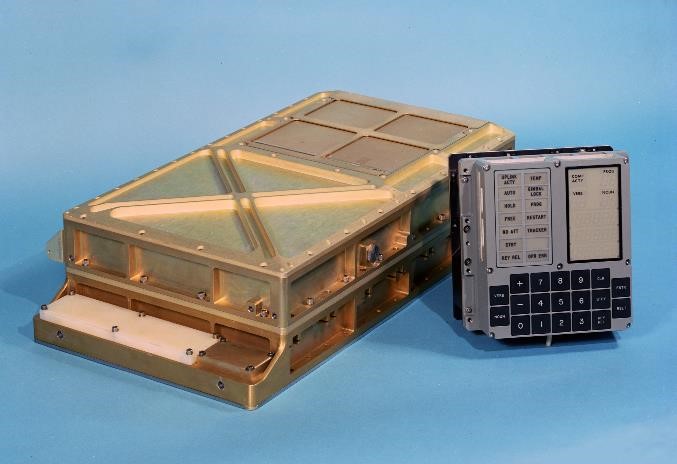Dick Battin stood on his driveway in the New England frosty pre-dawn back in October 1957, straining his eyes to see Sputnik fly overhead. It was amazing. Watching that little point of light scoot silently across the sky made Battin’s heart pound. A human-made hunk of metal was actually orbiting Earth!
Walking back to his house, Battin’s mind raced. Oh, how he wished he’d never left the MIT Instrumentation Laboratory a year and a half ago. He’d regretted it since the day he decided to move on to what he thought were greener pastures. But now, his regret became a steadfast resolve to somehow get back to the Lab again, because he knew – he was absolutely certain without a doubt – that Doc Draper would be getting his hand in this new venture of space exploration. And Battin wanted in, too.
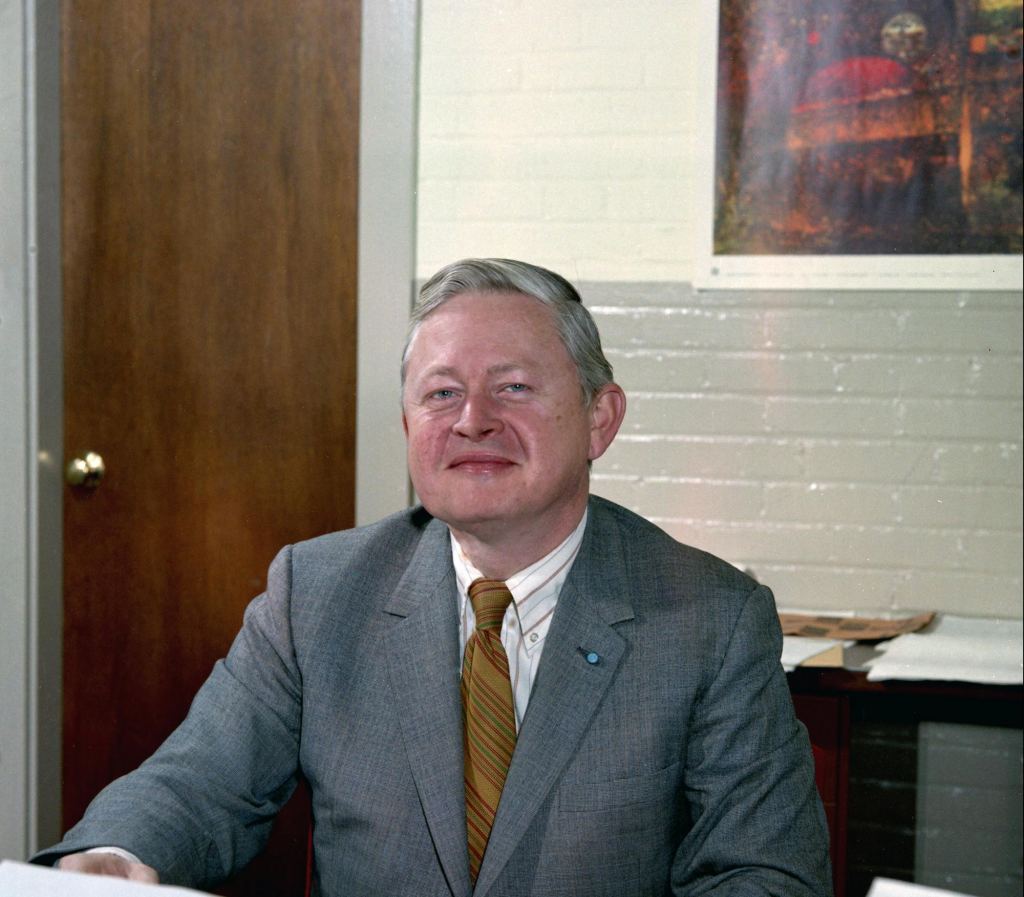
Doc — Dr. Charles Stark Draper — had created a teaching laboratory in the early 1930s for his aeronautics classes at the Massachusetts Institute of Technology. At first, the Lab allowed students to get hands-on experience with things like wiring fuel and altitude gauges for airplanes, but over time became a full-up laboratory, developing the instrumentation needed for aircraft navigation. During World War II, Draper’s Lab expanded, and they moved off campus into the old Whittemore Shoe Polish factory by the railroad tracks on Cambridge’s Massachusetts Avenue.
The lab became known as the Confidential Instrument Development Laboratory, producing technological advances such as early guidance systems and gyroscopic equipment that led to the Mark 14 gunsight used by the Navy’s anti-aircraft weaponry. About 85,000 of the gunsights were produced at a company called Sperry Gyroscopes, building Draper’s reputation within the military and his prestige at MIT, as the royalty for the gunsights became a primary source of funding for the university.

But Draper’s pride, joy and primary focus came in inventing a practical application for specialized inertial instruments — gyroscopes and accelerometers — to do autonomous onboard navigation. Based on the missile guidance systems, Draper created a new system that could continuously calculate via dead reckoning the position, orientation, and velocity of an aircraft. It would eliminate the need for more arduous methods of navigation, such as radio navigation or pilots conducting celestial star sightings to plot a ‘fix’ on a map. With a few more tweaks and advances, Draper felt his system possibly could autonomously ‘pilot’ an aircraft.
In an audacious test of Draper’s guidance, navigation, and control (GN&C) technologies in 1953, he and seven other engineers from the MIT Instrumentation Laboratory (its new post-war name) flew coast-to-coast with their Space Inertial Reference Equipment (SPIRE) system installed in the back of a B-29 bomber. SPIRE automatically directed the plane’s flight, the first working implementation of what is called inertial navigation – a self-contained system that tracks position and plots a course. They took off from Hanscom Air Force Base in Massachusetts and flew to Los Angles, with a human pilot on board only for takeoff and landing — and in case the system failed. Also on board, newsman Eric Sevareid and his film crew documented the trip, talking with Draper along the way about possible future uses of this autonomous navigation system, including – perhaps one day – for spacecraft. Spectacularly, the B-29 arrived precisely at the correct destination, even making last-minute corrections for side winds. Sevareid concluded his report by saying, “Maybe one could say this is one small step towards the age of space travel.”
Draper’s reason for flying to Los Angeles was to present a paper on the SPIRE system at a conference. During his talk, someone stood up and said, “This is ridiculous! It could never work.” Draper calmly replied. “Well, I just flew across the country using it.”
With new and improved versions of SPIRE, inertial guidance systems began to be used on ships and aircraft, revolutionizing air travel by providing pinpoint accuracy for global flights. The systems were especially crucial for Cold War era submarine-launched ballistic missiles and rocket guided missiles, both which needed to be automatically guided to their targets without radio communications because those transmissions could expose their presence. The Lab’s inertial-based GN&C systems were central to the UGM-27 Polaris submarine missile program and the missiles launched by the Atlas and Titan rockets.
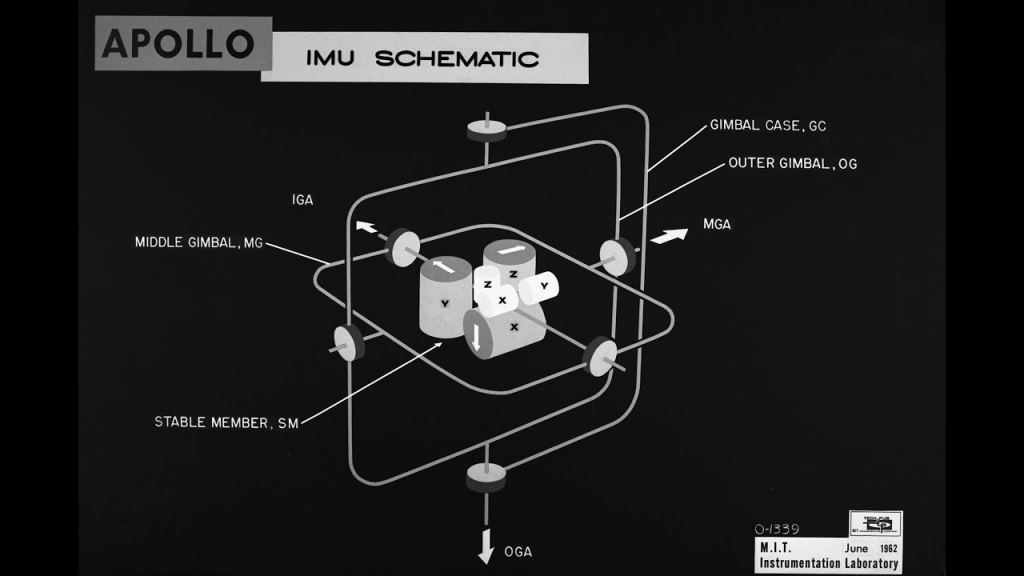
Draper himself was a pilot, adventurer and intellectual – he entered college at the age of 15, and legend has it he enrolled in more courses at MIT than anyone else, ever. And he was an absolutely delightful human being. Everyone who knew him called him “Doc,” and he became a father-like figure to many. Draper could instantly recall the names and faces of the hundreds of people who worked at the Lab over the years, or the thousands of students he taught, even decades after they graduated.
Directing the Lab, Draper made everyone feel important, whether they were the lead engineer, the secretary or the janitor. NASA’s Bob Seamans was Draper’s student and protégé, working at the Lab for fifteen years. He recalled Draper saying, “Working here you might not have money for the babes or the horses, but we’re going to have fun!” Draper constructed a push button under his desk which activated a relay to the large clock in the main office, moving the hands ahead one hour. This signaled it was now time for cocktails, and Marie Allen, Draper’s faithful secretary would break out the stowed spirits. Doc possessed another legendary ability, to drink everyone else under the table.
A self-described “greasy thumb mechanic,” Draper has been called a heterogeneous engineer, as he understood all angles of the work conducted by the Lab. He could be found on the shop floor, but possessed the acumen to deal with politicians or heads of the military. Draper intuitively understood complex math and physics, but also held a degree in psychology. He was a cunning entrepreneur, but his greatest love and interest was education. He ran the MIT aeronautics department at the same time as operating the Lab and was also responsible for an education program to train military officers in the guidance technology they’d be implementing in the field. The educational processes he created at MIT and the Instrumentation Lab gave true meaning to the MIT motto, “Mens et Manus,” Mind and Hand. He passed his brilliant leadership methods on to a long list of future leaders.
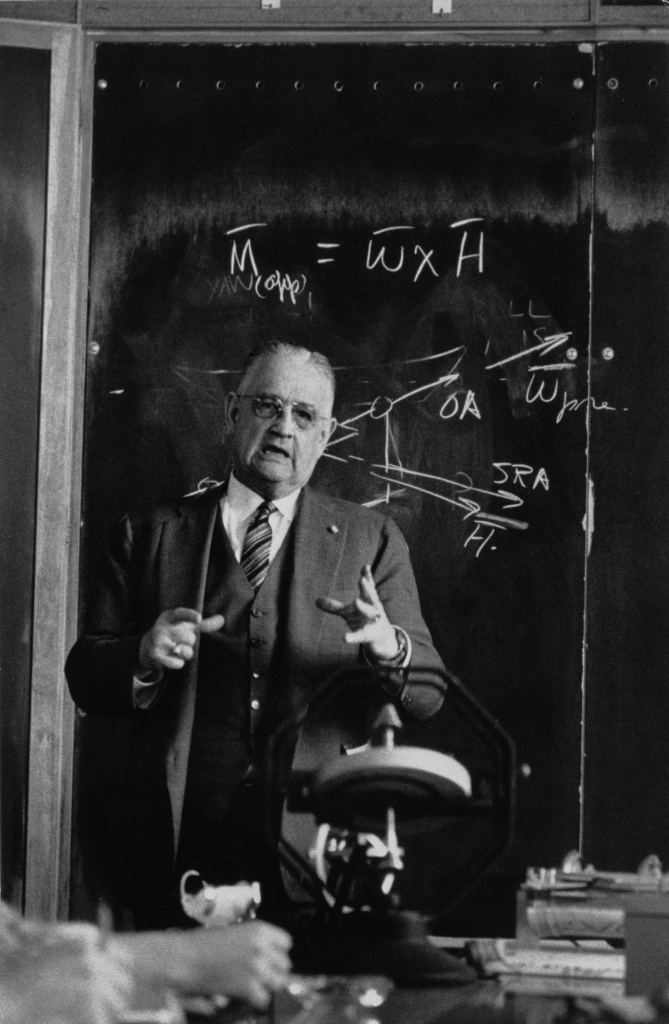
See more images from the MIT Instrumentation Laboratory, now known as Draper, at their special “Hack The Moon” website for the Apollo 50th anniversary.
And Draper surrounded himself with other brilliant people, with several former students staying on to work at the Lab. In the 1950s David Hoag became the technical director for gunsight and guidance systems development, while Milton Trageser was project manager. J. Halcombe Laning worked on the computing side, creating the first algebraic compiler in 1953 (he named it George), which led to improvements in MIT’s famous Whirlwind computer, one of the first large-scale, vacuum-tube computers, developed during World War II. Battin joined the team in ’51, and always felt Laning was his mentor, as well as a good friend.
Battin’s early days at the laboratory were spent working on classified guidance systems, but, of course, no textbooks on the subject existed. Almost everything they figured out at the Lab became future textbook material, such as their Q-guidance system, named after a fundamental matrix they derived, which forevermore formed the basis of the types of computations guidance systems needed to operate.
But then Battin made what he always considered his life’s worst mistake, thinking he needed to explore other vistas in his work options. He left the lab to join a consulting company, but ended up thoroughly disliking the whole thing from the beginning: the work wasn’t interesting (he did inventory control) and it required frequent travel (he didn’t like being away from his family).
By staying in touch with Hal Laning, Battin learned — after Sputnik – a few details about a potential spacecraft the Lab was dabbling with, where Laning was conducting rudimentary computer simulations of flying round trips to the planet Mars. That tidbit of enticing information was the last straw. Battin made his life’s best decision, to return the MIT Instrumentation Lab.
In 1957, he officially joined Laning’s work on an Air Force contract for ballistic missile guidance systems. But a small clause in the contract indicated the Lab could devote a small amount of time to other independent research and development relative to guidance. That research became a small spacecraft known as the Mars Probe. Laning’s original idea was, since almost everyone was thinking about space in those days, he wasn’t going to sit around and wait to be asked to develop a space guidance system, he just decided – with Doc Draper’s blessing – to do it.
Milt Trageser led the spacecraft design, and along with Laning, Battin, Eldon Hall, Ralph Ragan and a few others, this new “space” team built a small wooden model of the spacecraft, did studies on what it would take for guidance and navigation, and performed preliminary calculations of trajectories to Mars. The most efficient trajectory to the Red Planet, they figured out, could be done with a launch date in December of 1962 and the probe would swing around Mars on February 15, 1963. An onboard camera would take one picture at closest approach to Mars — they didn’t want to make this thing too complicated and mess up their one chance – and it would return to Earth with a three-year round trip, splashing down in the Gulf of Mexico for recovery of the film canister. The biggest challenge was figuring out guidance techniques for a trip of that length that could be computed solely on board the spacecraft. A vehicle traveling such distances certainly could not be controlled from the ground, at least not with the radio technology available at that time.
They discussed their ideas with astronomers at the Smithsonian Astrophysics Observatory in Cambridge, who promptly told Battin and Laning they were crazy. The astronomers asked, “How are you going to get to Mars? You don’t even know where Mars is.”
And they were right. At that time with only ground-based observations, the uncertainty of the absolute location of Mars at any given time was, plus or minus, 20,000 miles. But what the astronomers didn’t understand was Laning and Battin weren’t planning to rely on ground-based measurements. Instead, the measurements would be made on board the spacecraft, with navigation computed along the way. Battin compared the concept to driving from Boston to New York: “I don’t need to know the latitude and longitude of New York City to get there,” he said. “I can just drive there, as long as I can see where I’m going. I don’t need somebody in Boston to tell me where I am and how fast I should be going and where I should be pointing. I just look for New York and steer for it.”
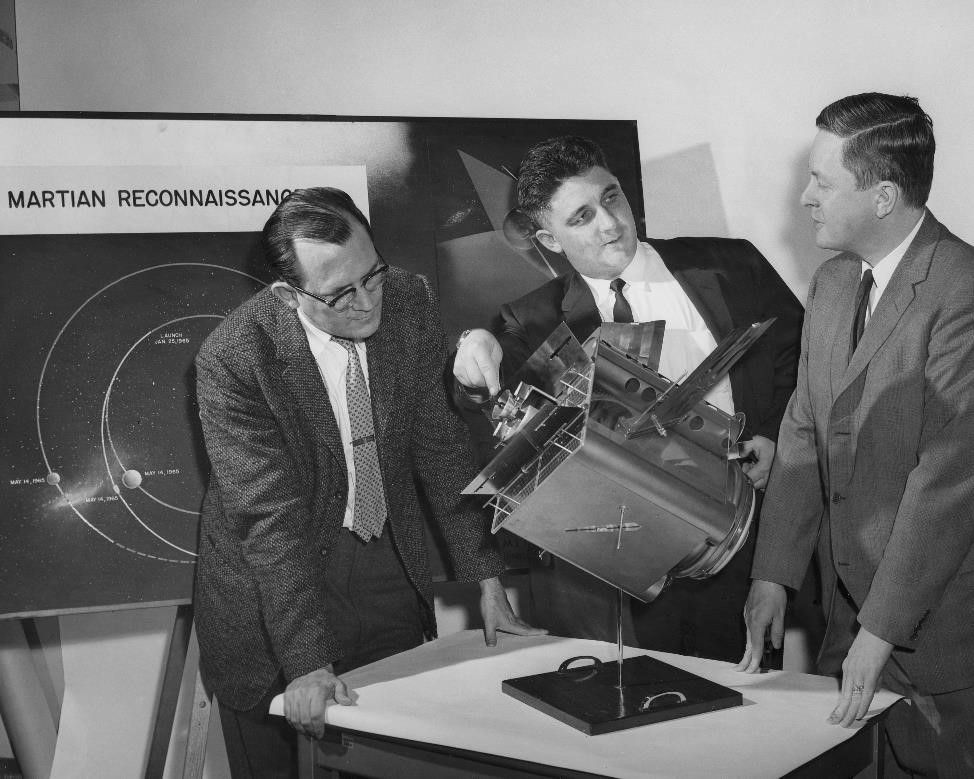
The Mars Probe team realized a small onboard computer to direct the spacecraft operations would be the most critical component they could design, and to test their ideas, they turned to the power of MIT’s Whirlwind computer. This gigantic computer was housed in an enormous building, and before turning Whirlwind on, the Lab team needed to first notify the Cambridge powerplant, because of the tremendous strain the computer put on the city’s electrical system.
The team carefully input their computations by using perforated, punch-card-like tape, carefully not exceeding Whirlwind ‘s 1,024 16-bit words of memory. This was state-of-the-art in the late 1950s, but all those constraints made the idea of putting a tiny computer inside a small spacecraft seem quite far-fetched. Plus, it would need to operate continuously and flawlessly during the entire three-year trip — no in-flight repairs or data uplinks — and it would have to continually determine where it was, and when it needed to compensate with directional modifications performed by little gyroscopes called angular momentum wheels.
They figured out how to make it all work. The overall autonomous operation was managed onboard by a small general-purpose digital computer, configured by its designer, Lab member Raymond Alonso. It didn’t need much power except at occasional times for higher speed computations. A unique feature of this computer was a pre-wired, read-only, non-erasable memory called a rope core, a configuration using wires threaded in and out of tiny magnetic rings. A ring, or core, with wire threaded through the center represented a one; an empty core represented a zero. The pattern of wires formed the ones and zeroes of a hard-wired computer program.
Their design was remarkable, their documentation comprehensive. In July 1959, they compiled a four-volume set of descriptions, details, and schematics about the little spacecraft, the small computer and the GN&C system. What the team didn’t know at the time, however, was despite their groundbreaking work, their beloved Mars Probe would – sadly — never fly. But everything they designed, tested and calculated for this far-fetched little computer would soon transform into the guidance computer for the Apollo spacecraft.
Next: Part 2: How the MIT team developed the Apollo Guidance Computer

